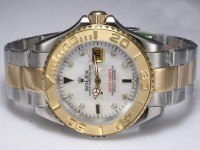there are 10% More ‘Swiss Made’ watch From January 01, 2017

A full report of the previous regulations can be found by downloading this report (PDF) from the Federation of the Swiss fake Watch Industry, but the major focus of this regulation is on the first bullet point. What makes a movement Swiss? So, the new regulations will absolutely go far in strengthening the Swiss brand and keeping the value of a “Swiss Made” watch high, but it will also drive out certain lower cost manufacturers from the country and will discourage entrepreneurs from starting watch companies in Switzerland as they will face a higher barrier to entry. At least 60% of the production costs of a watch taken as a whole must be Swiss-based.
The new regulation comes at a time when the Swiss luxury watch industry finds itself at a critical impasse because of dynamically changing consumer demands in Asia and a volatile global economy, so the impact of any change to this industry will be felt more keenly than in a period of relative calm. The economic impact of the new regulation is unclear. Currently, if you are searching for a great best fake watch to add to your collection, or just hunting for a high-end timepiece, then my table below can help you out.
As David pointed out in his article on the new regulation back in late 2014, it is the third bullet point that is the most contentious. According to Swisstime, “consumers are willing to pay up to 20% more for Swiss replica watches generally, and up to 50% more for certain mechanical watches” which could be interpreted as some flexibility on the customers’ side when it comes to paying a premium for a Swiss made product. Lower cost manufacturers will purchase movement kits and key components from in general lower quality Asian manufacturers, then buy higher priced items in Switzerland (balance wheel, springs, mainspring, and jewels are most common), hitting the 50% mark for value of components of Swiss manufacture. In an uncharacteristically playful move from the Swiss giant, these are a breath of fresh, colorfully contrasting air.
The new “Swiss Made,” or “Swissness” regulation was adopted by parliament back on June 21, 2013 – following some six years of discussions and debates – and changes the third bullet point about the Swiss movement to the following: As was mentioned in the beginning of the article, the new regulations will be in effect from January 1, 2017, but that doesn’t mean that starting in the new year every watch at your local retailer will abide by these regulations. All fake watches produced until the end of this year will be allowed to be distributed until December 31, 2018. Cases and crystals in stock at the end of this year will be allowed to be used in production until the end of 2018, without having to be included in “The 60% Rule.” As a timepiece maker it is a fascinating company that has done a lot and gained a laudable amount of popularity for a high-end exclusive watch maker.
The thing is though this new regulation need mostly affect watch brands in the sub-$1,000 market where there has traditionally been more of a balancing game when it came to managing Swiss made and “overseas sourced” parts used to make up a watch. In comparison to my other replica watches, it is light and sits flatly around the wrist which makes me extremely comfortable to put on. Therefore, far it had been entirely possible to produce a watch with an Asian case, dial, hands, crystals and strap, have the movement come from a Swiss supplier (or just modify an Asian movement with some Swiss parts in Switzerland) case said movement up and still get to put a Swiss Made stamp on the dial.
In the eyes of Swiss regulators and many consumers, previous regulations, which required at least 50% of a watch’s value to be realized in Switzerland have been abused by lower-cost manufacturers who have been producing watches that are, legally-speaking, “Swiss Made” without upholding the implicit manufacturing standards expected to go with it. The movement must still contain at least 50% Swiss-made components in value (not in quantity) and at least 60% of the movement’s production must be generated in Switzerland. Last but not least, it also specifies that the technical development of a “Swiss Made” watch and movement must be carried out in Switzerland. Smart watches are also included for the first time.


